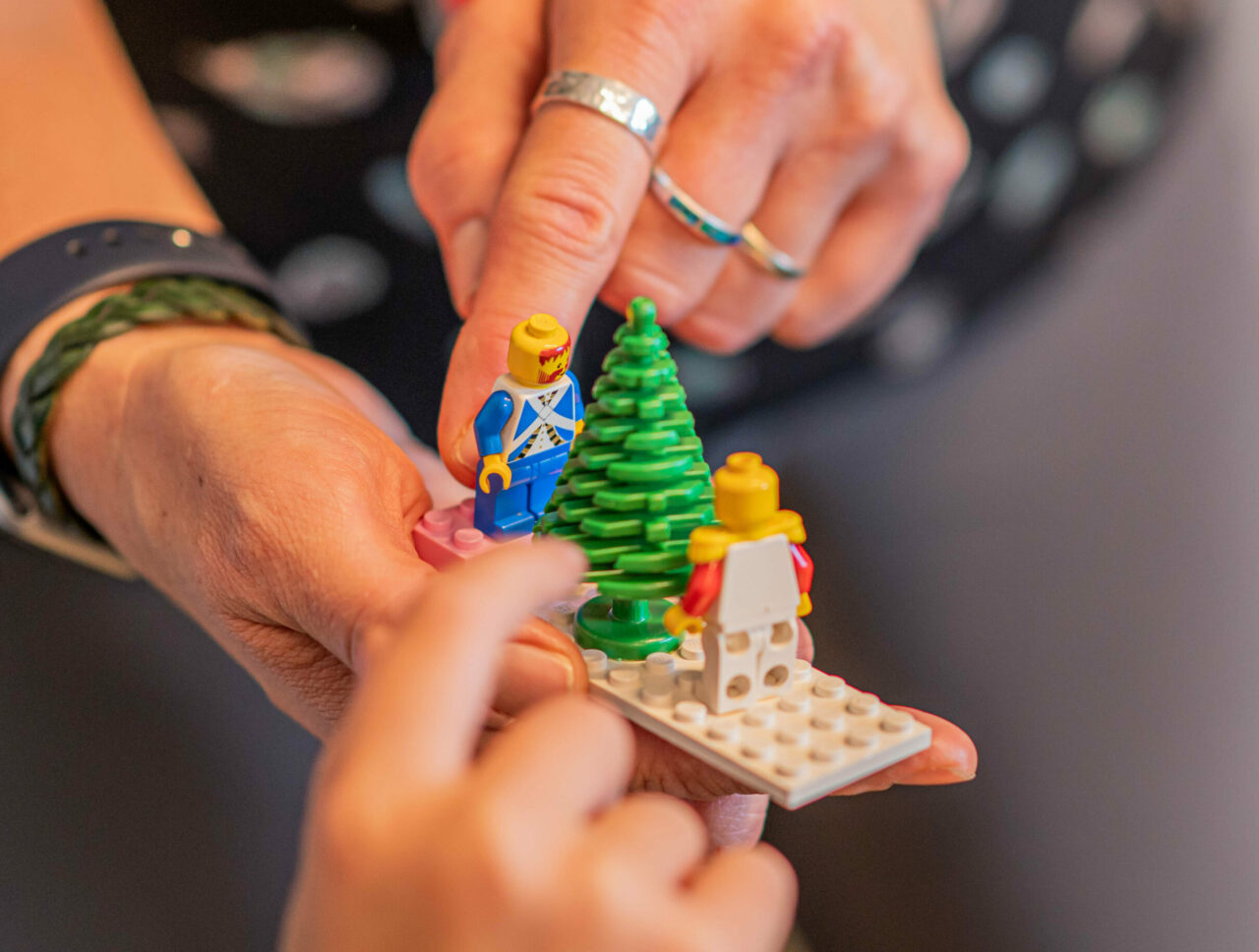What is Play Therapy?
Play and Creative Arts therapy is a developmentally sensitive, evidence-based form of psychotherapy for children, young people and adults. It is characterized by being action-oriented, body based and experiential. Play is the child’s natural medium of self-expression.
Play and the use of creative and expressive arts allows the individual a safe distance for emotions and sensations to safely arise, be explored and processed. Play and creative therapies work with both conscious and deeper, subcortical unconscious aspects that drive our lived experience.
The elements of playful exploration and creative expression can mitigate and help integrate sensations and emotions coming from the lower subcortical brain and body so clients can process and integrate in a deep way and yet usually stay in their window of tolerance (our capacity to stay regulated).
Core elements of Play and Creative arts therapy offers clients perceived control, reward, and manageable stress, these are some of the essential ingredients identified for successful therapeutic interactions (Perry 2006).
There are many models of Play and Creative arts therapy. As an Integrative therapist trained in many stress and Trauma informed brain and body wise modalities Gayle follows an integrative and dynamic model. Perry and Gaskil (2006) note how play therapy approaches from all theoretical perspectives are compatible with much of the current neurological research.
“Toys are children’s words, play is their language” – Landreth
“Play is a child’s natural medium for self-expression” – Axline
“What turns destructive energy into creative energy is play” – McCarthy, 2007
What’s in the space?
Play and Creative Arts therapists use a variety of tools to allow for full bodily expression to help ignite the imagination and offer regulation. The room will include sand trays and a range of miniature toys and objects that can be used for symbolic expression, clay, paint, art
materials, puppets, whole body regulatory tools such as yoga balls and more.
Surely talking is necessary?
A wealth of research from the field of Neurobiology has found that talking therapies alone are often unable to reach deeper, subcortical areas of the brain/body where stress and trauma are held. The higher cortical areas of the brain involved in thought and speech will shut down as a survival mechanism when facing overwhelming stress. For emotionally painful material which often involves physiological sensations or the lack of, words are often inadequate, not accessible and not enough. In many cases, talking is the distraction.
Research (Van der Kolk, Malchiodi, Perry) has found that limbic system therapies which includes Play and the Creative/expressive arts can reach far deeper, subcortical, less conscious areas of the brain/body where unprocessed stresses and developmental traumas are actually stored. For children this is even more pertinent as children do not naturally ‘talk through’ their issues, they naturally play them out. Play and Creative Arts therapy can also be used effectively to help process early pre-verbal experiences of Trauma and attachment issues.
What does Play/Creative Arts therapy help with?
Registered Play and Creative Arts Therapists are highly trained and this form of therapy can help children, young people and adults with a wide range of issues including:
Developmental Trauma, single event traumas, phobias, stress, loss, anxiety, bullying, chronic illness, eating disorders, rigidity, preverbal trauma, disability and more.
Our Play Therapy Specialist
Gayle Thomas works as our Integrative Therapist. She adopts a compassionate, creative and somatic approach to the pupils she works with. She is trained in a variety of brain/body wise approaches which she integrates so that she can very much follow a pupil’s individual needs in a client-centred, non-pathologizing way.
She pays particular attention to the bodily narrative that her pupils bring often beneath conscious awareness. The expressive arts, play and somatic therapies can give voice to the less conscious, non-verbal aspects of our experience and awaken the imagination, opening doorways to growth and a deeper connection to ourselves in our bodies.
A wealth of research from neuroscience is finding that overwhelming stresses and unprocessed traumas are stored in the lower subcortical brain and held in body memories as implicit or unconscious memories.
Following the body and its innate wisdom and resources can be a powerful portal to healing and moving forward in life. Her work is underpinned by recent findings in interpersonal neurobiology and Stephen Porges’ Polyvagal theory.
She works with all ages and a wide range of client issues from mild to severe (for example PTSD or Complex Developmental Trauma and attachment issues).
She is registered with BACP and am regularly supervised to BACP’s high ethical standards.
